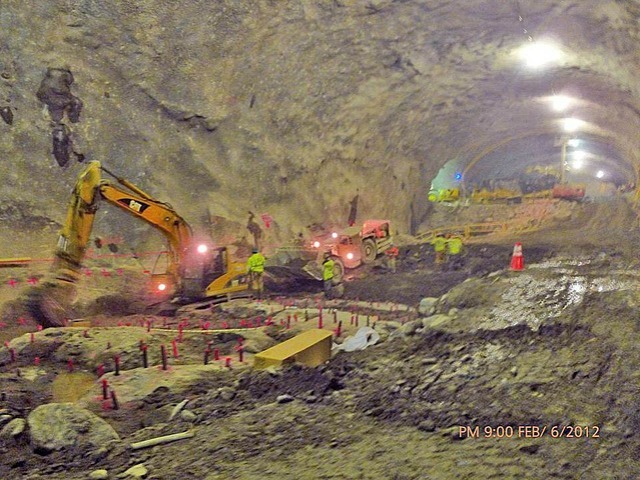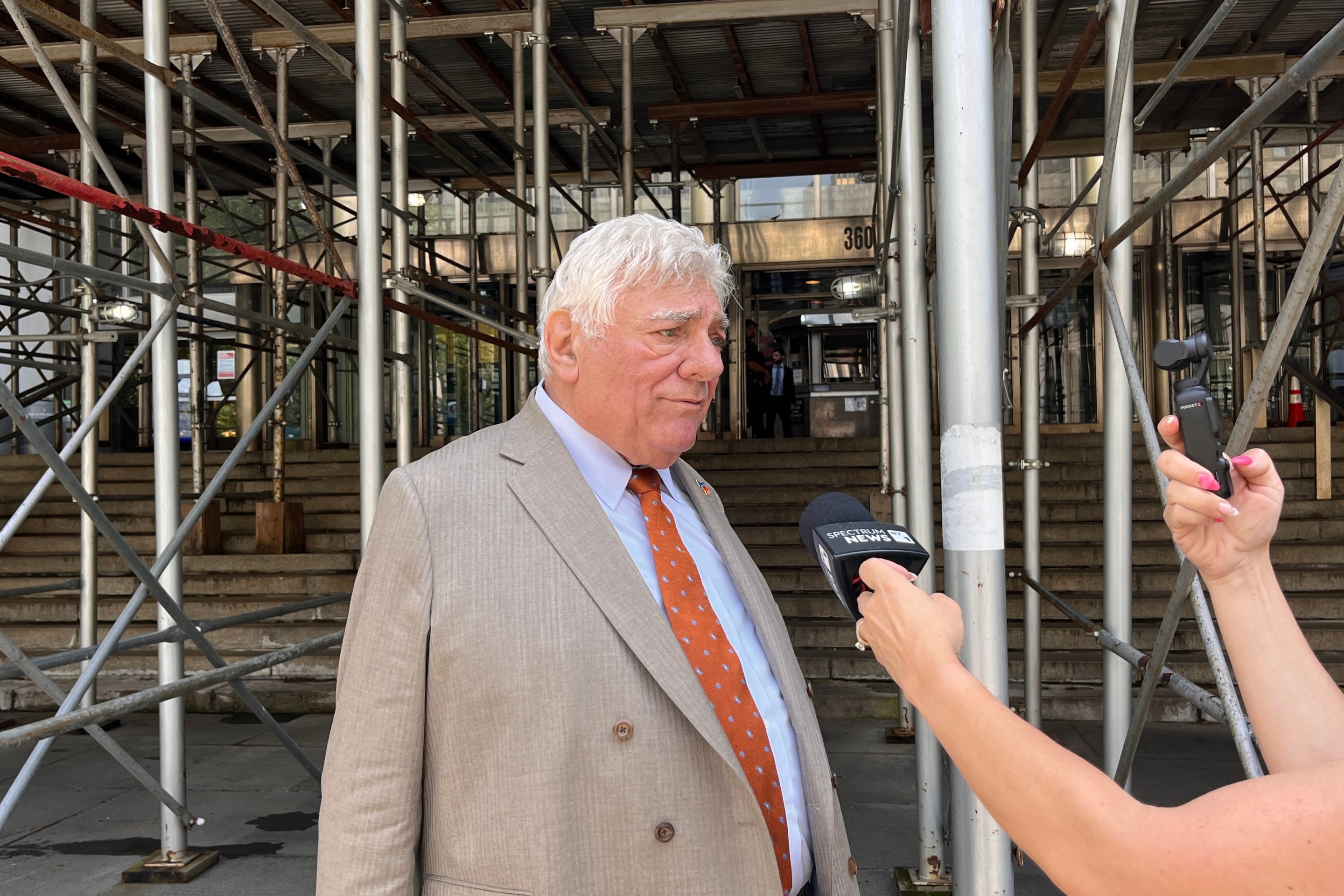The MTA has revealed the 2020-2024 capital plan, and the only question left now are the small issues of how to fund it and ensuring it actually gets done.
The proposed $51-billion major construction plan lays out the agency's future spending priorities — a laundry list that includes plenty of goodies for transit customers.
But a budget is not just a list of expenditures, but also an accounting of where the money will come from — and this capital plan relies heavily on revenue from congestion pricing and the newly instituted mansion tax and internet sales tax passed by the state Legislature earlier this year — to the tune of $25 billion.
To come up with the rest, the MTA itself will spend $9.7 billion mostly through more borrowing backed by its existing tolls and other revenues. The federal government is providing $10.6 billion, and the city and state will chip in $3 billion each. Neither the state nor the city has actually allocated the money yet.
"We will leave it up to state and city leaders on how that gets funded, but the goal is $6 billion in new capital money," said MTA Chairman Pat Foye. In a statement released Monday afternoon, Gov. Cuomo said he'll hold up his end of the deal, adding ominously that he would review the plan to see if it matched his previous demands for a focus on signal and accessibility upgrades, equity for commuter railroads and "addressing quality of life concerns."
But nothing is guaranteed when the state and city are concerned. The current 2015-2019 capital plan is underfunded by $8.9 billion — the result of the state and city not putting in all the money they promised. And Comptroller Tom DiNapoli is raising a red flag about the proposed capital plan, noting in his latest report on the MTA's finances that even as the agency begins to borrow money under the assumption that it will be backed by state money, New York State's government has not identified a revenue source:
The state may elect to meet its commitment through direct payments, or it could authorize the MTA to issue its own bonds backed by an existing or new state revenue source. As a result, it is not yet possible to assess the impact on taxpayers, the state budget or the MTA. The MTA has committed all of its own capital resources and has begun to commit up to $3 billion against the state’s obligation. According to the MTA, it will require state funding beginning in the next state fiscal year.
As a result, Ben Fried of the TransitCenter said that the MTA must avoid loading up on too much debt to fund the plan.
"MTA capital programs are large and complex, and this one is the largest and most complex yet." Fried said.
The good news? The proposed 2020-2024 plan sets aside lots of money for major improvements:
- $37.3 billion for subway investment, which includes $7 billion for signal modernization, $6.1 billion to buy new subway cars and $5 billion towards making the subway system more accessible.
- $3.5 billion for spending on the city's bus system. Roughly $2.3 billion of that will buy new buses, including $1.1 billion to buy 500 electric buses — up from just 10 today. Another $800 million will fund the upgrade of the Jamaica bus depot.
The focus on signal upgrades, rolling stock and accessibility were all hallmarks of what riders and activists asked for in recent reports focused on the upcoming capital plan like the TransitCenter's Build Trust report and the Riders Capital Plan from the Riders Alliance. They were also the core focuses of NYCT chief Andy Byford's Fast Forward plan, giving the transit chief a victory he seemed to relish.
The plan "exceeds my wildest expectations," Byford told reporters at a press conference on Monday morning. "I'm not even trying to keep the smile off my face," he said about the capital program that Ben Kabak called "a validation of Fast Forward."
But the key takeaway is how this is a validation of Fast Forward. It embraces and more importantly, funds all of Andy Byford's top priorities. This is a win for Byford who said he was "ecstatically happy," a win for Cuomo and a win for New Yorkers.
— Second Ave. Sagas (@2AvSagas) September 16, 2019
More: https://t.co/oDlcEBaM3P
The resignaling work will focus on six lines according to the MTA, including the Lexington Avenue line, which will double the amount of track miles with modern signals. In addition to the 4/5/6 trains, the MTA is planning to upgrade signals on sections of the G, the N and W, the F train, and the E, M and R trains. When those lines are upgraded, over 50 percent of riders will be rolling along on modern signal technology according to the MTA. The 2020-2024 plan has a goal of making 70 more stations accessible. It's a desperately needed upgrade for a system where only 119 out of 472 stations are fully accessible, and one that, if completed, would ensure that riders are never more than two stops from a station with an elevator.
Transit advocates reacted to the plan with cautious optimism.
"The draft plan released today is a big step in the right direction: it's ambitious in scope and it tackles the big problems like modernizing signal technology and making more subway stations accessible," Riders Alliance Executive director John Raskin said in a statement. "If all of this work happens as proposed, the transit system will truly be on the road to repair."
Raskin also warned though, that elected officials would have to "step up" to make sure the proposed plan becomes a reality, and that the governor must "find the funding required to do the complete job without taking shortcuts or forcing the MTA into more debt."
But if done correctly, the signal upgrades and station accessibility could be Gov. Cuomo's "long-term legacy," said Nicole Gelinas of the Manhattan Institute. But she also said that the MTA needs to get its costs under control.
About that. The 2020-2024 plan includes funding for Phase Two of the Second Avenue subway line, which would extend the Q to 106th, 116th and 125th Streets at a total cost of about $6 billion. Asked about the price of tag on adding 1.5 miles of track to the system, MTA Capital Construction chief Janno Lieber said that New York had a particularly stringent fire code.
"One of the reasons we have expensive subways is it requires you to comply with the fire code, which requires you to get people out," Lieber said. "Everybody who rides trains, and we have one thousand-plus people on a train, you have to get them out of the station. Other systems, which run trains that run fewer people on them don't have some of the same costs associated with the ability to get vertical circulation to get people out."
It was a bizarre answer. In the New York Times' landmark story about the costs associated with MTA capital projects, there was no mention of the city's fire code as a factor in higher construction costs, as Brian Rosenthal explained today on Twitter.
We looked at the fire code issue as part of our story on why it costs so much to build track in NYC. We didn't find any proof they're a significant factor. The codes are pretty similar across the world and certainly across the nation, as are related issueshttps://t.co/awdiipRKHZ
— Brian M. Rosenthal (@brianmrosenthal) September 16, 2019
Rather, the report focused on things like insane work rules, the small pool of politically connected contractors who bid on MTA work and the difficulties those contractors have navigating the MTA bureaucracy — areas the MTA has tried to get a handle on through the use of design-build and a strict debarrment process for any contractor who "fails to complete a project within its budget constraints and inside 110 percent of the pledged time frame."
Later this month, the MTA Board will vote on the plan, and the Capital Program Review Board will also have to give the plan its seal of approval.






